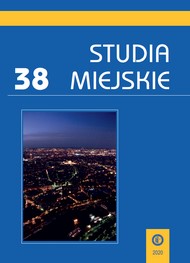MANAGING INNOVATIONS IN METROPOLITAN STOCKHOLM
MANAGING INNOVATIONS IN METROPOLITAN STOCKHOLM
Author(s): Justyna DanielewiczSubject(s): Environmental Geography, Governance, Rural and urban sociology, Economic development, ICT Information and Communications Technologies
Published by: Uniwersytet Opolski
Keywords: governance; innovation; metropolitan area; Stockholm;
Summary/Abstract: Metropolitan areas are hubs of productivity and innovation. Although innovation can happen anywhere, it is usually concentrated in heavily urbanised areas. Cities therefore play a key role in the expansion of productivity and are drivers of economic development. Benefits created by cities reach beyond their borders. The impact of such spreading from cities to smaller towns and their surrounding and neighbouring regions is considerable, as is their positive economic influence manifesting in a radius of up to 200-300 km (OECD 2015). It is therefore vital to support innovation in order to internationally promote the competitiveness of metropolitan areas, thus consequently advancing whole regions and countries. Such development necessitates inter-sectoral collaboration, first and foremost, according to the Triple Helix concept, the collaboration of business, science and public authorities. This depends upon forms of collaborative governance at a regional and local level, which can set agreed priorities and operationalise this approach. This paper sets out to identify the forms of cooperation taken in Metropolitan Stockholm to generate innovation. The methodology applied in this research uses critical secondary data analysis, mainly the subject-matter literature and documents issued by public institutions. The paper starts with an introduction illustrating the meaning of innovation in the rise of competitiveness and development in metropolises. The next part of the paper elaborates on the concept of governance as the basis for cross-sectoral collaboration, to subsequently move to the core of the thesis, devoted to the analysis of good practice in innovation networks, particularly in ICT, life science and green economy. The summary indicates the main success factors.
Journal: Studia Miejskie
- Issue Year: 2020
- Issue No: 38
- Page Range: 11-22
- Page Count: 12
- Language: English

